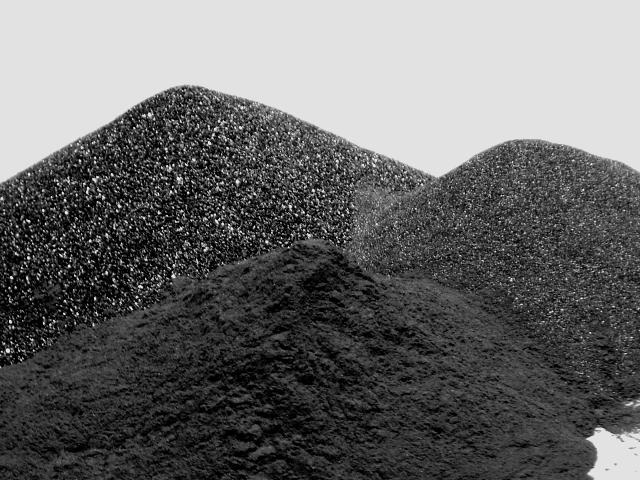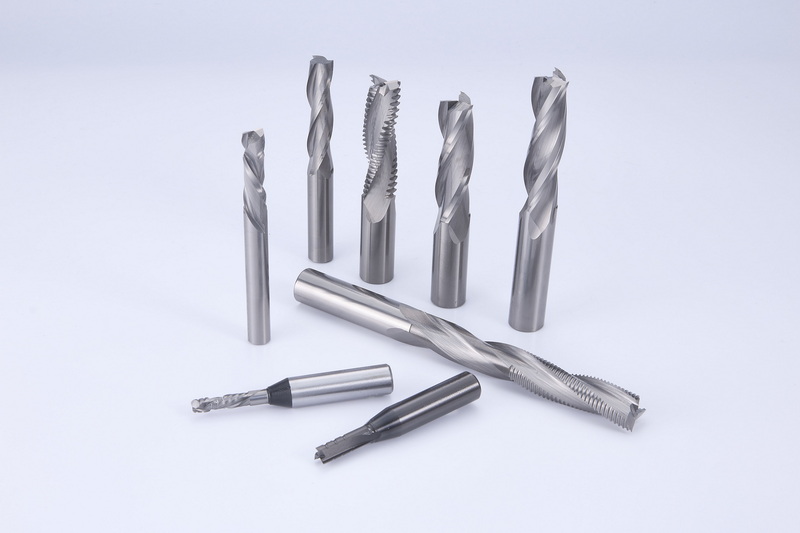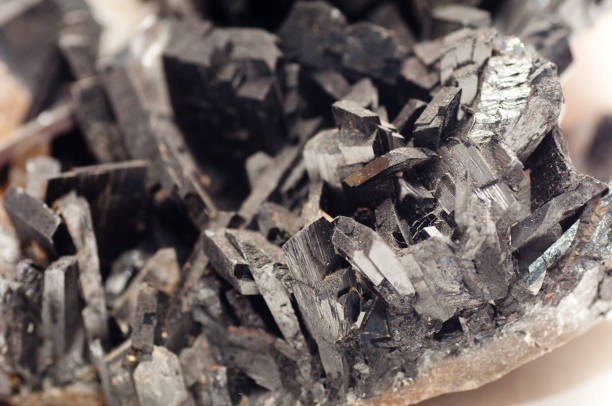Content Menu
● Introduction to Tungsten Carbide
● Understanding Hardness and the Brinell Test
>> The Science of Material Hardness
>> Brinell Hardness Testing Methodology
>>> Test Configuration Standards
● Brinell Hardness of Tungsten Carbide: The Numbers
>> Hardness Range
>> Comparative Analysis
● Factors Affecting Hardness
>> Microstructural Influences
● Advanced Industrial Applications
>> Cutting-Edge Uses
● Environmental and Economic Analysis
>> Lifecycle Considerations
>> Sustainability Initiatives
● Conclusion
● FAQ: Brinell Hardness of Tungsten Carbide
>> 1. Why use Brinell instead of Rockwell for WC testing?
>> 2. How does temperature affect WC hardness?
>> 3. Can Brinell hardness predict wear resistance?
>> 4. What's the hardness of carbide cutting inserts?
>> 5. How does HV hardness compare to HB for WC?
● Citations:
Tungsten carbide stands as one of the most remarkable engineering materials, prized for its exceptional hardness, durability, and resistance to wear. In this comprehensive article, we explore the Brinell hardness of tungsten carbide, delve into the science behind hardness testing, and examine why this property is so vital in industrial applications. Along the way, we'll illustrate key concepts with diagrams and images for clarity and engagement.

Introduction to Tungsten Carbide
Tungsten carbide (WC) is a compound consisting of tungsten and carbon atoms arranged in a hexagonal lattice structure. Key properties include:
- Extreme hardness (second only to diamond)
- High melting point (2,870°C/5,200°F)
- Compressive strength exceeding 6,000 MPa
- Density of 15.6 g/cm³ (30% denser than steel)
These characteristics make it ideal for applications requiring wear resistance under extreme conditions, from mining drills to precision surgical tools.
Understanding Hardness and the Brinell Test
The Science of Material Hardness
Hardness measures a material's resistance to localized plastic deformation. For tungsten carbide, this property is critical in applications involving:
- Abrasive wear
- High-pressure contact
- Repeated impact loads
Brinell Hardness Testing Methodology
Developed in 1900 by Johan August Brinell, this test uses a 10 mm tungsten carbide ball under loads up to 3,000 kgf. The standardized process involves:
1. Surface preparation: Ensuring test area is flat and clean
2. Indentation: Maintaining load for 10-30 seconds
3. Measurement: Using optical microscopy to determine indentation diameter
Test Configuration Standards
| Material Type | Ball Diameter | Load | Duration |
| Soft Metals | 10 mm | 500 kgf | 30 s |
| Steel Alloys | 10 mm | 3,000 kgf | 15 s |
| Tungsten Carbide | 10 mm | 3,000 kgf | 30 s |
Brinell Hardness of Tungsten Carbide: The Numbers
Hardness Range
Tungsten carbide exhibits Brinell hardness values between 700-2,400 HBW, depending on composition:
| Grade | Binder Content | Grain Size | Hardness (HBW) |
| Ultra-Fine Grain | 3-6% Co | 0.2-0.5 μm | 1,800-2,400 |
| Medium Grain | 6-10% Co | 0.8-1.4 μm | 1,400-1,800 |
| Coarse Grain | 10-15% Co | 2.0-4.0 μm | 900-1,400 |
Comparative Analysis
| Material | Brinell Hardness | Relative Abrasion Resistance |
| Aluminum | 15-120 HBW | 1× |
| Tool Steel | 550-650 HBW | 5× |
| Tungsten Carbide | 1,600 HBW | 100× |
| Diamond | Not Testable | 1,000× |

Factors Affecting Hardness
Microstructural Influences
1. Binder Phase Composition
- Cobalt binder increases toughness but reduces hardness
- Nickel binders offer better corrosion resistance
2. Grain Size Distribution
- Nanocrystalline WC (200 nm) achieves 2,800 HV
- Submicron grains (0.5 μm) balance hardness/toughness
3. Manufacturing Techniques
- Hot Isostatic Pressing (HIP) reduces porosity
- Spark Plasma Sintering enhances density
Advanced Industrial Applications
Cutting-Edge Uses
1. Space Exploration
- Rocket nozzle liners withstand 3,300°C exhaust gases
- Satellite gyroscope bearings with 20-year lifespans
2. Medical Technology
- Dental burs rotating at 400,000 RPM
- Radiation shielding in proton therapy systems
3. Energy Sector
- Fracking drill inserts surviving 10,000 psi pressures
- Nuclear reactor control rod coatings
Environmental and Economic Analysis
Lifecycle Considerations
- Production Energy: 25-35 kWh/kg vs. 8-10 kWh/kg for steel
- Recycling Efficiency: 95% WC recovery through zinc process
- Cost Breakdown:
- Raw Materials: 45%
- Manufacturing: 35%
- Quality Control: 20%
Sustainability Initiatives
- Binder alternatives to cobalt (Fe/Ni/Cr composites)
- Additive manufacturing reducing material waste by 70%
Conclusion
With Brinell hardness values reaching 2,400 HBW, tungsten carbide remains unparalleled for extreme wear applications. Advanced manufacturing techniques continue to push its performance limits while addressing environmental concerns through improved recycling and alternative binders. As industries demand ever-higher durability, tungsten carbide's unique properties ensure its ongoing critical role in technological advancement.

FAQ: Brinell Hardness of Tungsten Carbide
1. Why use Brinell instead of Rockwell for WC testing?
Brinell's larger indenter better accommodates WC's heterogeneous structure, providing more representative hardness values.
2. How does temperature affect WC hardness?
Hardness decreases by 15% at 800°C but remains superior to most metals.
3. Can Brinell hardness predict wear resistance?
While correlated, actual wear performance requires additional tribological testing.
4. What's the hardness of carbide cutting inserts?
Indexable inserts typically range 1,500-1,900 HBW depending on coating.
5. How does HV hardness compare to HB for WC?
Vickers hardness (HV) values are typically 1.1-1.3× higher than Brinell.
Citations:
[1] https://en.wikipedia.org/wiki/Tungsten_carbide
[2] https://www.allied-material.co.jp/en/techinfo/tungsten_carbide/features.html
[3] https://www.engineersedge.com/hardness_conversion.htm
[4] https://www.linde-amt.com/resource-library/articles/tungsten-carbide
[5] https://www.sinowon.com/when-to-use-brinell-hardness-test.html
[6] https://www.emcotest.com/en/hardness-knowledge/overview-of-hardness-testing-methods/brinell-hardness-test
[7] https://www.zhongbocarbide.com/how-hard-is-tungsten-carbide-hrc.html
[8] https://www.yatechmaterials.com/en/technology/hardness-of-tungsten-carbide/
[9] https://outils.it/en/tungsten-carbide/
[10] https://www.zwickroell.com/industries/metals/metals-standards/brinell-test-iso-6506/
[11] https://en.wikipedia.org/wiki/Brinell_hardness_test
[12] https://shop.machinemfg.com/the-pros-and-cons-of-tungsten-carbide-a-comprehensive-guide/
[13] https://foundrax.co.uk/the-brinell-hardness-tester-explained/
[14] https://www.mitsubishicarbide.net/contents/mmus/enus/html/product/technical_information/information/hardness.html
[15] http://www.tungsten-carbide.com.cn/tungsten-carbide-hardness-conversion-table.html
[16] https://www.struers.com/en/Knowledge/Hardness-testing/Brinell
[17] http://www.tungsten-carbide.com.cn
[18] https://www.azom.com/article.aspx?ArticleID=9119
[19] https://konecarbide.com/tungsten-vs-tungsten-carbide-differences-explained/
[20] https://www.bostoncenterless.com/wp-content/uploads/2017/07/Hardness-Conversion-Chart.pdf
[21] http://www.chinatungsten.com/Tungsten-Carbide/Properties-of-Tungsten-Carbide.html
[22] https://shop.mitutoyo.eu/web/mitutoyo/en/mitutoyo/Hardness_indenters_and_replacement_balls/Replacement%20ball%20for%20Brinell%20test,%205,0mm,%20tungsten%20carbide/$catalogue/mitutoyoData/PR/19BAA162/index.xhtml;jsessionid=86759E3C18E5F7C382DF201FDC59B950
[23] https://www.retopz.com/hardness-in-the-tungsten-carbide-industry-a-comprehensive-definition/
[24] https://fostermation.com/hardness-conversion/
[25] http://www.kovametalli-in.com/properties.html
[26] https://www.retopz.com/57-frequently-asked-questions-faqs-about-tungsten-carbide/
[27] https://www.carbide-products.com/blog/hardness-testing-of-carbide/
[28] https://www.sanfoundry.com/testing-materials-questions-answers-brinell-hardness-test/
[29] https://www.allied-material.co.jp/en/techinfo/tungsten_carbide/features.html
[30] https://www.sciencedirect.com/topics/engineering/brinell-hardness-testing
[31] https://www.paulo.com/resources/hardness-testing-methods-rockwell-brinell-microhardness/
[32] http://hardmetal-engineering.blogspot.com/2011/
[33] https://foundrax.co.uk/all-about-brinell-hardness-testing/
[34] https://www.metalsupermarkets.com/metal-hardness-testing-methods-scales/
[35] https://www.hit-tw.com/newsdetails.aspx?nid=298
[36] https://www.sciencedirect.com/topics/engineering/brinell-hardness
[37] https://www.kemalmfg.com/cnc-machining/hardness-conversion-chart/
















